
The genre of the portrait is quite rare in the work of the Italian master of the Renaissance, and the picture presented is the only Correggio work kept in the Hermitage. The image of a beautiful young woman in contrasting brown and white mourning clothes in the shadow of the laurels, which probably symbolizes her poetic talent, is mysterious.
The tree trunk, entwined with ivy, means love and adultery. The vessel, on which the name of the grass of oblivion from ancient Greek mythology is written, hints at the loss of a loved one. Of the numerous versions of who is represented in the portrait, the most likely is Ginevra Rangone, the wife of Jangalezzo da Correggio, who was part of the Franciscan order and was widowed in 1517. According to another suggestion, this is the poetess Veronica Gambara, the patroness of the artist, the wife of the ruler of the city, Correggio Giberto, who died in 1518.
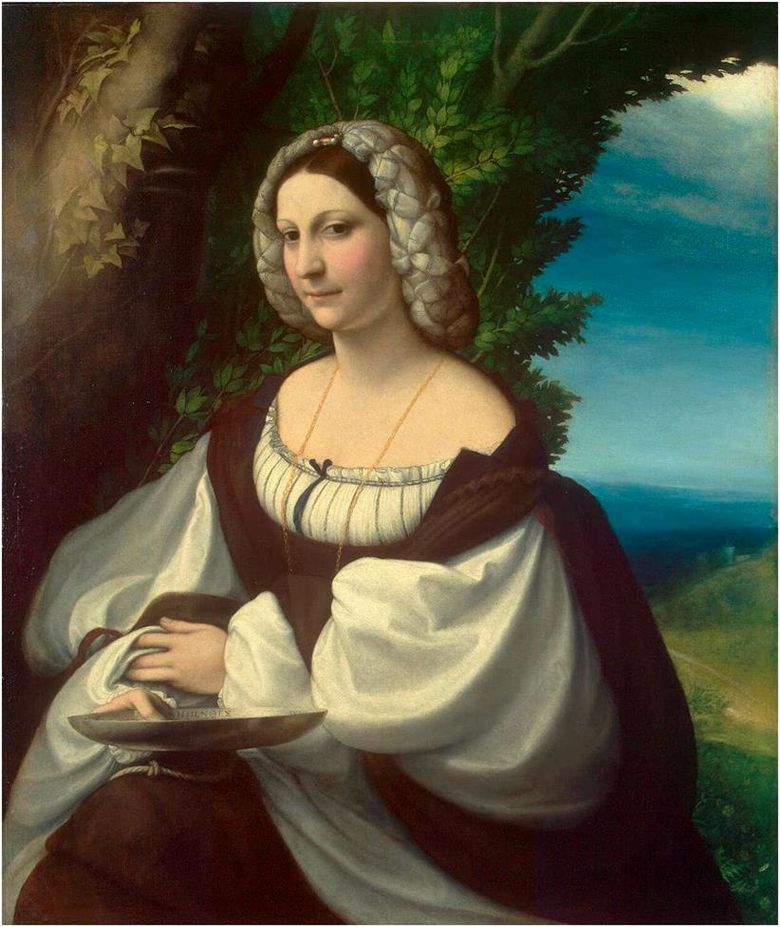 Portrait de femme – Correggio (Antonio Allegri)
Portrait de femme – Correggio (Antonio Allegri)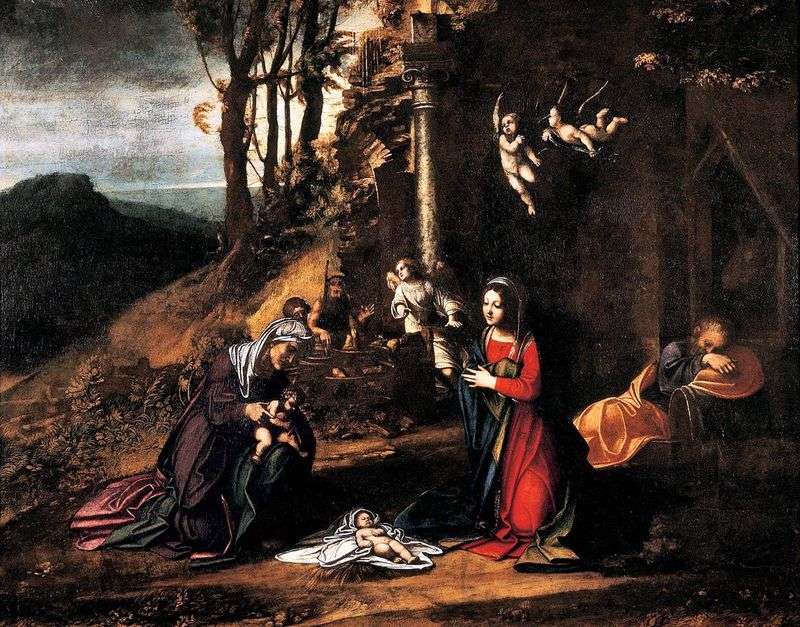 Christmas with the Holy. Elizabeth and the little John the Baptist by Correggio (Antonio Allegri)
Christmas with the Holy. Elizabeth and the little John the Baptist by Correggio (Antonio Allegri)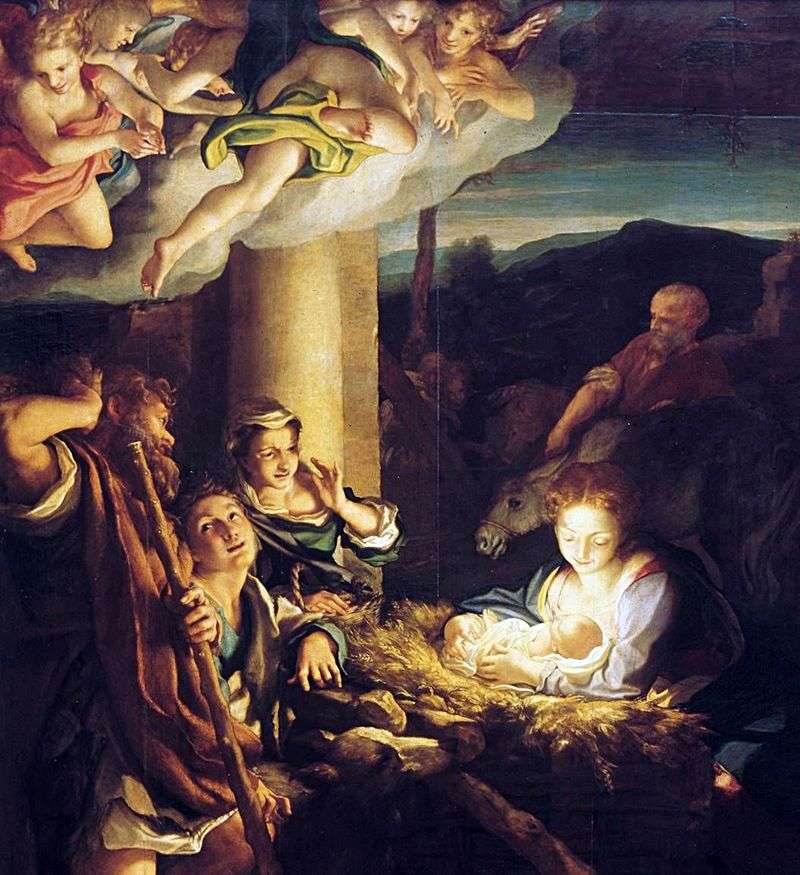 Nativity of Christ (Night) by Correggio (Antonio Allegri)
Nativity of Christ (Night) by Correggio (Antonio Allegri)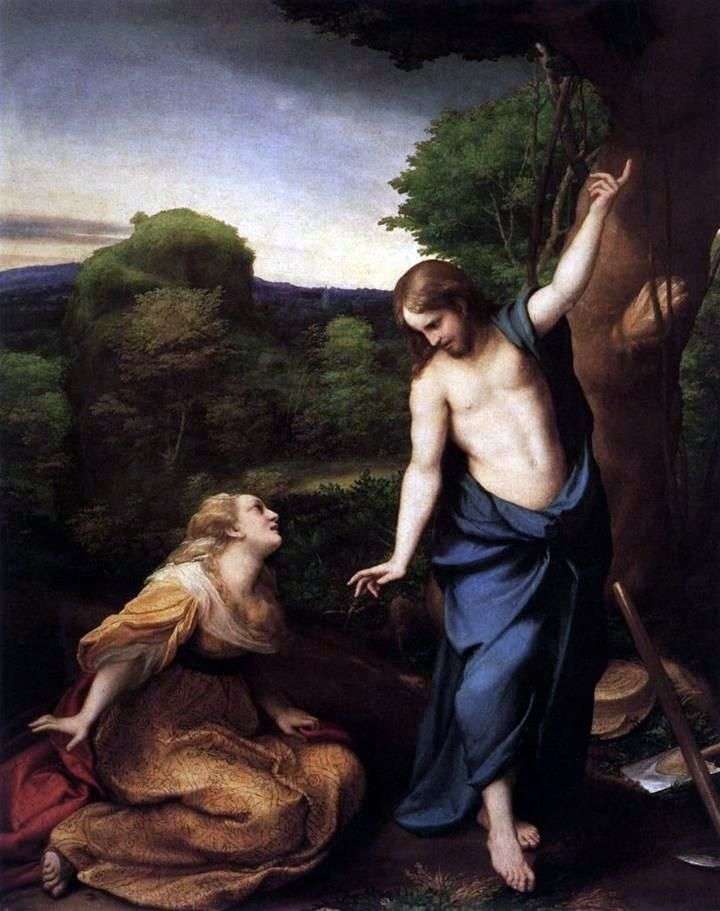 Do not touch Me (Noli me tangere) Magdalena by Correggio (Antonio Allegri)
Do not touch Me (Noli me tangere) Magdalena by Correggio (Antonio Allegri)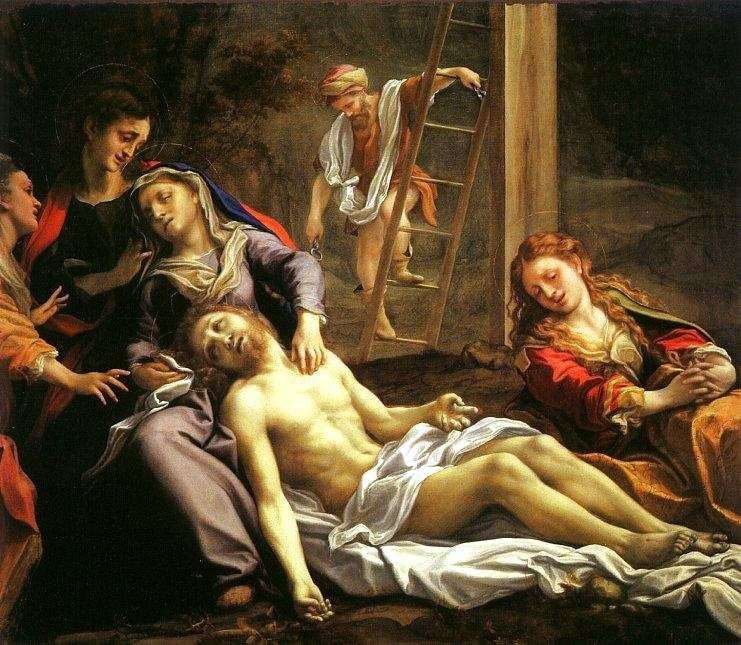 Descent from the Cross by Correggio (Antonio Allegri)
Descent from the Cross by Correggio (Antonio Allegri)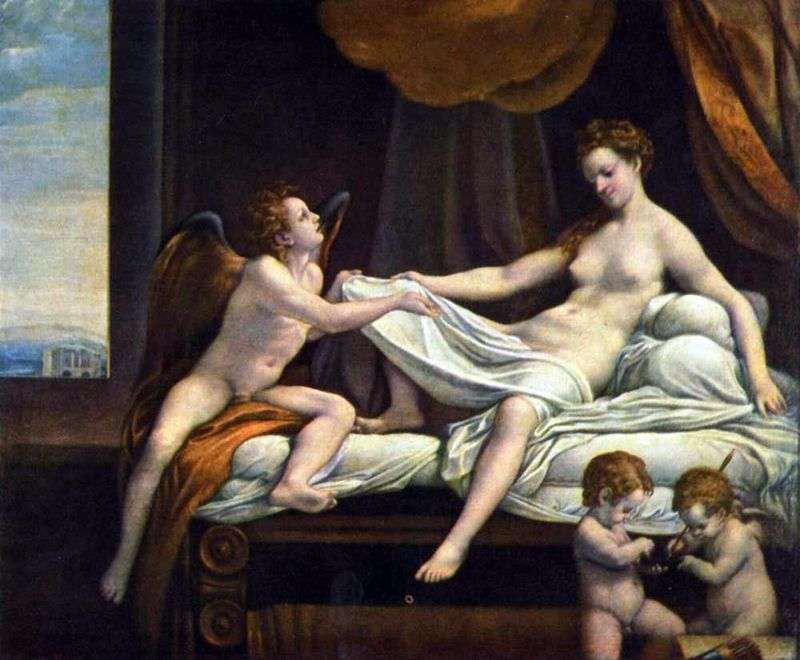 Danae by Correggio (Antonio Allegri)
Danae by Correggio (Antonio Allegri)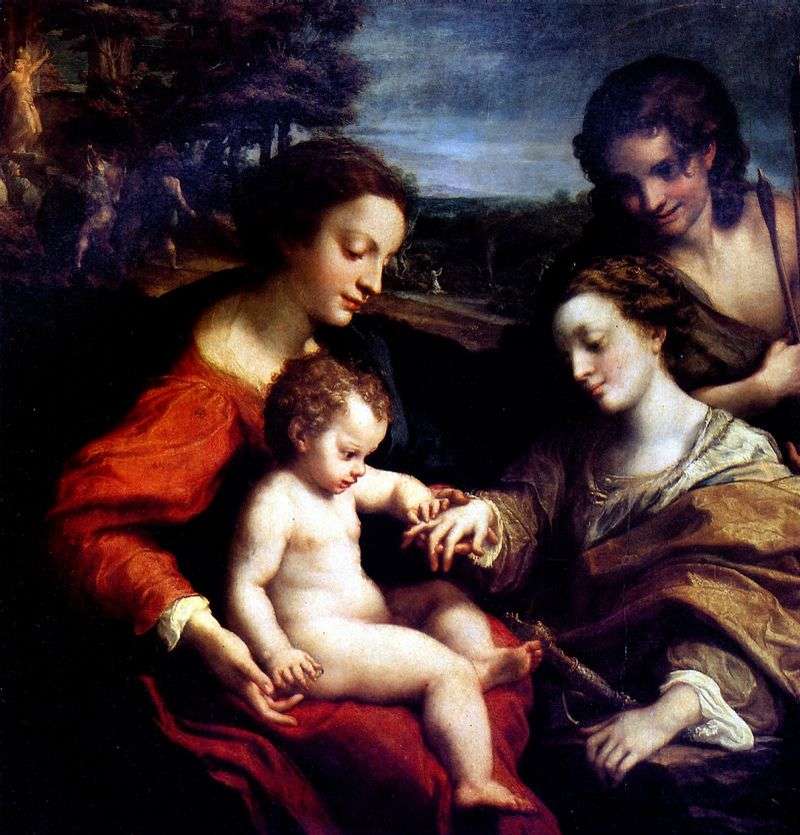 Betrothal of St. Catherine by Correggio (Antonio Allegri)
Betrothal of St. Catherine by Correggio (Antonio Allegri)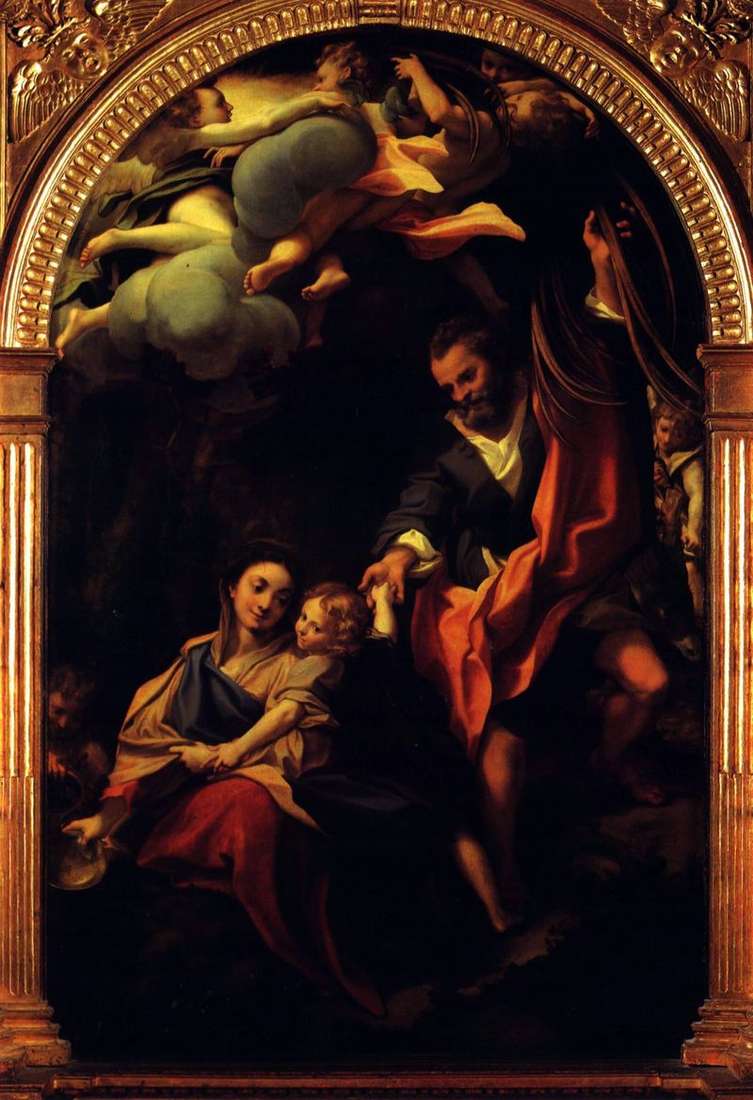 Madonna and basket by Correggio (Antonio Allegri)
Madonna and basket by Correggio (Antonio Allegri)